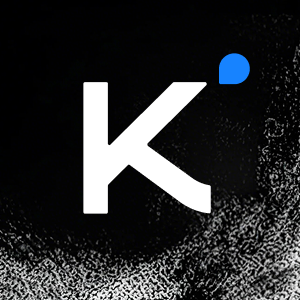Django CMS 4.1中PlaceholderRelationField与类视图的集成指南
2025-05-22 07:09:20作者:明树来
在Django CMS 4.1版本中,PlaceholderRelationField的引入为内容管理带来了新的可能性,但同时也带来了一些集成上的挑战。本文将详细介绍如何正确地在类视图中使用这一功能。
核心概念解析
PlaceholderRelationField是Django CMS 4.1中新增的字段类型,它取代了传统的PlaceholderField,提供了更灵活的内容管理方式。与类视图(如DetailView)配合使用时,需要注意以下几个关键点:
- 模型定义中需要包含PlaceholderRelationField字段
- 必须实现post_content_placeholder属性和get_template方法
- 需要正确配置CMS应用配置类
模型层实现
在模型层,我们需要定义PlaceholderRelationField并实现相关方法:
from cms.models import PlaceholderRelationField
from django.utils.functional import cached_property
class Post(models.Model):
post_content = PlaceholderRelationField(verbose_name="文章内容")
@cached_property
def post_content_placeholder(self):
return get_placeholder_from_slot(self.post_content, "post_content_placeholder")
def get_template(self):
return "posts/structure/post_structure.html"
视图层配置
类视图的配置是集成的关键环节。我们需要创建一个DetailView子类,并正确处理请求上下文:
from django.views.generic import DetailView
from django.shortcuts import get_object_or_404
class PostDetail(DetailView):
model = Post
template_name = 'posts/post_detail.html'
pk_url_kwarg = 'post_id'
def get_context_data(self, **kwargs):
post = get_object_or_404(Post, id=self.kwargs['post_id'])
self.request.toolbar.set_object(post)
context = super().get_context_data(**kwargs)
context.update({
"post": post,
"section": self._get_section()
})
return context
def _get_section(self):
try:
return Section.objects.get(
namespace=self.request.current_page.application_namespace
)
except Section.DoesNotExist:
return None
端点视图函数
为了与CMS工具栏正确集成,我们需要创建一个端点视图函数:
def post_endpoint_view(request, post):
return PostDetail.as_view()(request, post_id=post.id)
CMS应用配置
在cms_config.py中注册我们的模型和视图:
from cms.app_base import CMSAppConfig
class PostsAppConfig(CMSAppConfig):
cms_enabled = True
cms_toolbar_enabled_models = [(Post, post_endpoint_view)]
模板实现
需要创建两个模板文件:
- 结构模板(posts/structure/post_structure.html):
{% load cms_tags %}
{% placeholder "post_content_placeholder" %}
- 详情模板(posts/post_detail.html):
{% extends "base.html" %}
{% load cms_tags %}
{% block content %}
{% render_placeholder post.post_content_placeholder %}
{% endblock %}
常见问题解决
如果在集成过程中遇到以下问题,可以尝试以下解决方案:
-
编辑按钮不显示:检查cms_config.py配置是否正确,确保模型和视图已正确注册
-
无法添加插件:确认用户有足够的权限,检查模板中是否正确渲染了placeholder
-
URL参数不匹配:确保视图类中的pk_url_kwarg与URLconf中的参数名称一致
通过以上步骤,开发者可以成功地在Django CMS 4.1中将PlaceholderRelationField与类视图集成,实现灵活的内容管理功能。这种集成方式既保持了Django类视图的简洁性,又充分利用了Django CMS强大的内容管理能力。
登录后查看全文
热门项目推荐
相关项目推荐
 AutoGLM-Phone-9BAutoGLM-Phone-9B是基于AutoGLM构建的移动智能助手框架,依托多模态感知理解手机屏幕并执行自动化操作。Jinja00
AutoGLM-Phone-9BAutoGLM-Phone-9B是基于AutoGLM构建的移动智能助手框架,依托多模态感知理解手机屏幕并执行自动化操作。Jinja00 Kimi-K2-ThinkingKimi K2 Thinking 是最新、性能最强的开源思维模型。从 Kimi K2 开始,我们将其打造为能够逐步推理并动态调用工具的思维智能体。通过显著提升多步推理深度,并在 200–300 次连续调用中保持稳定的工具使用能力,它在 Humanity's Last Exam (HLE)、BrowseComp 等基准测试中树立了新的技术标杆。同时,K2 Thinking 是原生 INT4 量化模型,具备 256k 上下文窗口,实现了推理延迟和 GPU 内存占用的无损降低。Python00
Kimi-K2-ThinkingKimi K2 Thinking 是最新、性能最强的开源思维模型。从 Kimi K2 开始,我们将其打造为能够逐步推理并动态调用工具的思维智能体。通过显著提升多步推理深度,并在 200–300 次连续调用中保持稳定的工具使用能力,它在 Humanity's Last Exam (HLE)、BrowseComp 等基准测试中树立了新的技术标杆。同时,K2 Thinking 是原生 INT4 量化模型,具备 256k 上下文窗口,实现了推理延迟和 GPU 内存占用的无损降低。Python00 GLM-4.6V-FP8GLM-4.6V-FP8是GLM-V系列开源模型,支持128K上下文窗口,融合原生多模态函数调用能力,实现从视觉感知到执行的闭环。具备文档理解、图文生成、前端重构等功能,适用于云集群与本地部署,在同类参数规模中视觉理解性能领先。Jinja00
GLM-4.6V-FP8GLM-4.6V-FP8是GLM-V系列开源模型,支持128K上下文窗口,融合原生多模态函数调用能力,实现从视觉感知到执行的闭环。具备文档理解、图文生成、前端重构等功能,适用于云集群与本地部署,在同类参数规模中视觉理解性能领先。Jinja00 HunyuanOCRHunyuanOCR 是基于混元原生多模态架构打造的领先端到端 OCR 专家级视觉语言模型。它采用仅 10 亿参数的轻量化设计,在业界多项基准测试中取得了当前最佳性能。该模型不仅精通复杂多语言文档解析,还在文本检测与识别、开放域信息抽取、视频字幕提取及图片翻译等实际应用场景中表现卓越。00
HunyuanOCRHunyuanOCR 是基于混元原生多模态架构打造的领先端到端 OCR 专家级视觉语言模型。它采用仅 10 亿参数的轻量化设计,在业界多项基准测试中取得了当前最佳性能。该模型不仅精通复杂多语言文档解析,还在文本检测与识别、开放域信息抽取、视频字幕提取及图片翻译等实际应用场景中表现卓越。00 GLM-ASR-Nano-2512GLM-ASR-Nano-2512 是一款稳健的开源语音识别模型,参数规模为 15 亿。该模型专为应对真实场景的复杂性而设计,在保持紧凑体量的同时,多项基准测试表现优于 OpenAI Whisper V3。Python00
GLM-ASR-Nano-2512GLM-ASR-Nano-2512 是一款稳健的开源语音识别模型,参数规模为 15 亿。该模型专为应对真实场景的复杂性而设计,在保持紧凑体量的同时,多项基准测试表现优于 OpenAI Whisper V3。Python00 GLM-TTSGLM-TTS 是一款基于大语言模型的高质量文本转语音(TTS)合成系统,支持零样本语音克隆和流式推理。该系统采用两阶段架构,结合了用于语音 token 生成的大语言模型(LLM)和用于波形合成的流匹配(Flow Matching)模型。 通过引入多奖励强化学习框架,GLM-TTS 显著提升了合成语音的表现力,相比传统 TTS 系统实现了更自然的情感控制。Python00
GLM-TTSGLM-TTS 是一款基于大语言模型的高质量文本转语音(TTS)合成系统,支持零样本语音克隆和流式推理。该系统采用两阶段架构,结合了用于语音 token 生成的大语言模型(LLM)和用于波形合成的流匹配(Flow Matching)模型。 通过引入多奖励强化学习框架,GLM-TTS 显著提升了合成语音的表现力,相比传统 TTS 系统实现了更自然的情感控制。Python00 Spark-Formalizer-X1-7BSpark-Formalizer 是由科大讯飞团队开发的专用大型语言模型,专注于数学自动形式化任务。该模型擅长将自然语言数学问题转化为精确的 Lean4 形式化语句,在形式化语句生成方面达到了业界领先水平。Python00
Spark-Formalizer-X1-7BSpark-Formalizer 是由科大讯飞团队开发的专用大型语言模型,专注于数学自动形式化任务。该模型擅长将自然语言数学问题转化为精确的 Lean4 形式化语句,在形式化语句生成方面达到了业界领先水平。Python00
最新内容推荐
电脑PC网易云音乐免安装皮肤插件使用指南:个性化音乐播放体验 开源电子设计自动化利器:KiCad EDA全方位使用指南 Jetson TX2开发板官方资源完全指南:从入门到精通 昆仑通态MCGS与台达VFD-M变频器通讯程序详解:工业自动化控制完美解决方案 基恩士LJ-X8000A开发版SDK样本程序全面指南 - 工业激光轮廓仪开发利器 PhysioNet医学研究数据库:临床数据分析与生物信号处理的权威资源指南 QT连接阿里云MySQL数据库完整指南:从环境配置到问题解决 Python案例资源下载 - 从入门到精通的完整项目代码合集 2022美赛A题优秀论文深度解析:自行车功率分配建模的成功方法 TJSONObject完整解析教程:Delphi开发者必备的JSON处理指南
项目优选
收起
deepin linux kernel
C
24
9
Ascend Extension for PyTorch
Python
223
245
Nop Platform 2.0是基于可逆计算理论实现的采用面向语言编程范式的新一代低代码开发平台,包含基于全新原理从零开始研发的GraphQL引擎、ORM引擎、工作流引擎、报表引擎、规则引擎、批处理引引擎等完整设计。nop-entropy是它的后端部分,采用java语言实现,可选择集成Spring框架或者Quarkus框架。中小企业可以免费商用
Java
9
1
暂无简介
Dart
672
157
本项目是CANN提供的数学类基础计算算子库,实现网络在NPU上加速计算。
C++
662
313
React Native鸿蒙化仓库
JavaScript
262
323
🔥LeetCode solutions in any programming language | 多种编程语言实现 LeetCode、《剑指 Offer(第 2 版)》、《程序员面试金典(第 6 版)》题解
Java
64
19
仓颉编译器源码及 cjdb 调试工具。
C++
134
867
仓颉编程语言测试用例。
Cangjie
37
860
openGauss kernel ~ openGauss is an open source relational database management system
C++
160
218